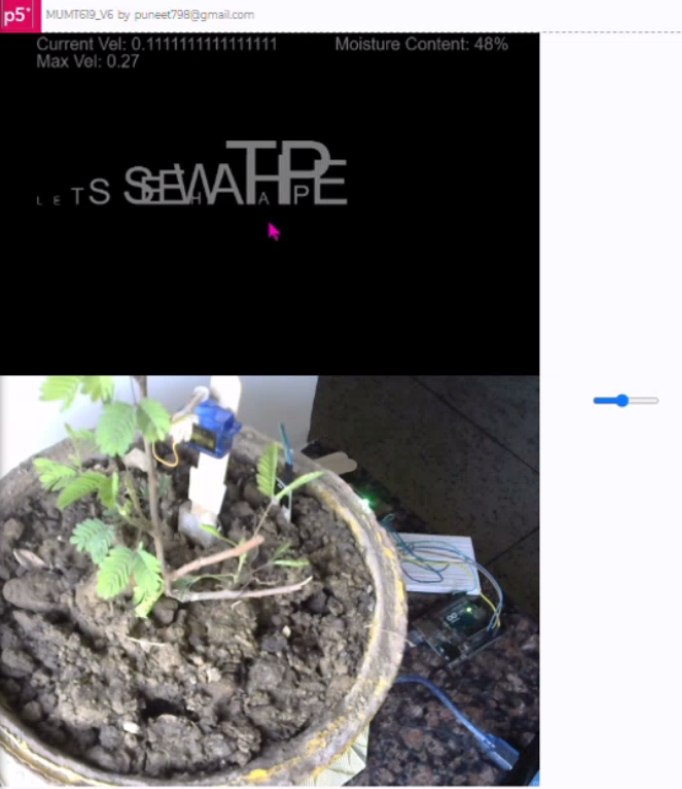Cybernetic Plant Human Interface
This project explores a proof of concept to open up a dialogue between a human and a non-human (a Mimosa Plant) in a digital space where they co-exist together, share the digital space, and compete for their respective goals to interact with each other resulting in a cybernetic performance over time.

Introduction
The intake of digital information till date is heavily based on rectangular computer screens and demand an acute visual focus (which is also overwhelmingly visual from a cultural/social sensory point of view) of the observer. The observer (often termed as the user) reads the visual content (text, images) from the screen that most oftenly remains static and exists independent of the carbon footprint produced by the user, exploitation of the human labor for the mining processes to build hardware for these machines, and the impact of human activities on the world outside the human life thus creating biased sensory perceptions about the world - the world where humans co-exist with other living and non-living being.
Hence, the goal of this project is to build a multi-sensory digital interface (a text writing platform) as a proof of concept where the human is coupled with a non-human (a mimosa plant) to interact in a digital space thus metaphorically depicting the importance of each other’s presence for existence.

The digital interface for this project is designed to be a text writing platform where the typography of the text (font size, spacing, color) dynamically evolves over time based on the respective goals of the human and the non-human while the interface acts as a communication channel (See Figure). The non-human chosen for this project is a touch sensitive mimosa plant whose leaves fold inward and droop when touched or shaken and re-open a few minutes later (≈ 10min). The goal of the user is to enter text with a typing speed (measured in letters per frame) which should not exceed the threshold limit set by the user themselves. The color of the text and the background, font size, and the positioning of the letters on the platform are set as a function of the typing speed and in case the typing speed exceeds the threshold limit, an external stimulus (set up as a part of the system) acts on the leaves of the mimosa, making the leaves fold - effecting their equilibrium state. Hence, in response, the plant triggers a change in the typography on the screen and a haptic signal to the user with the help of linear resonant actuators. This cybernetic performance can be visualized on the platform in the form of a morphing typography as the human and the non-human fight for their respective goals while co-existing together.
Objectives of the Project
- Present a POC for a human and non-human digital interface.
- Provide a methodology to understand sensing mechanism of both human and the non-human, choice of the sensors and actuators, and scientific and artistic challenges in the design process.
- Lay out a ground work for the design of a cybernetic digital interfaces.
